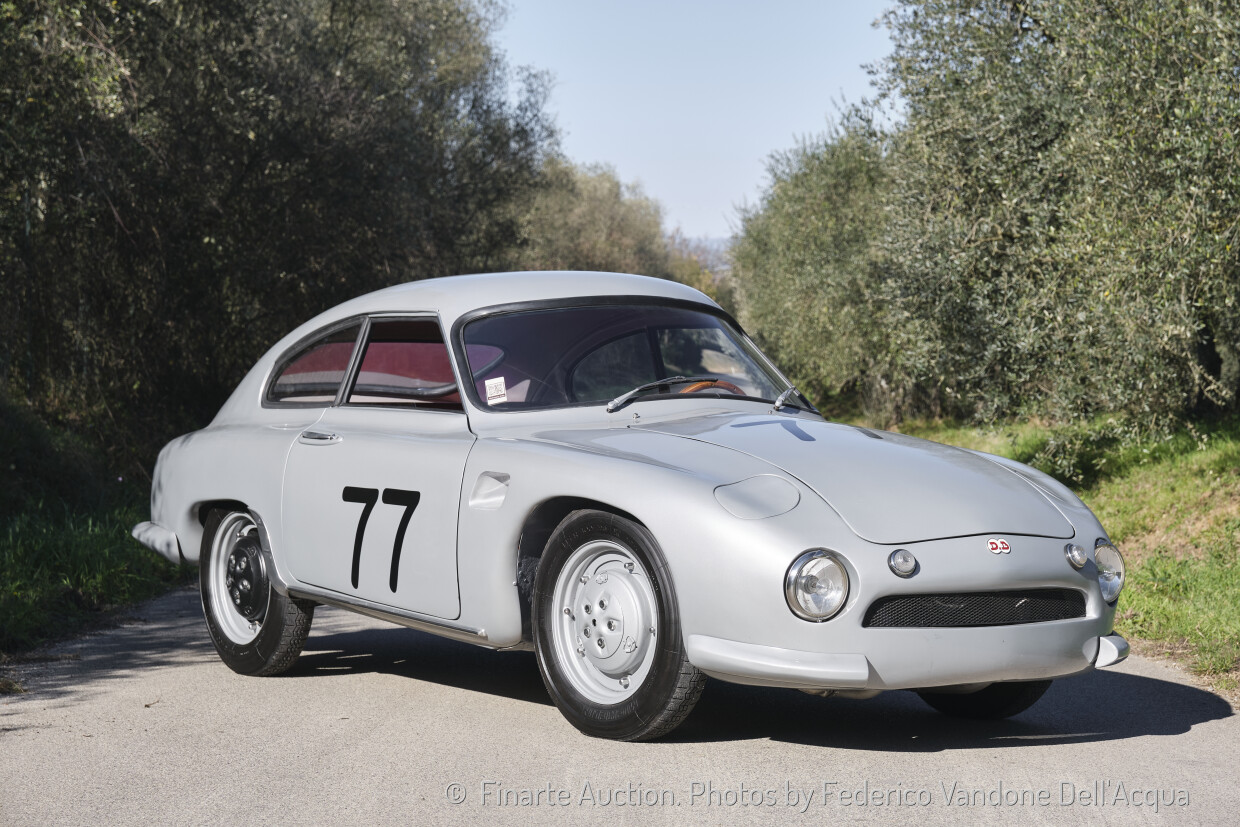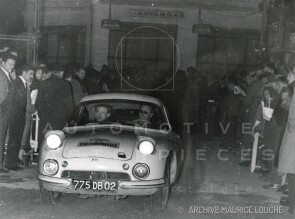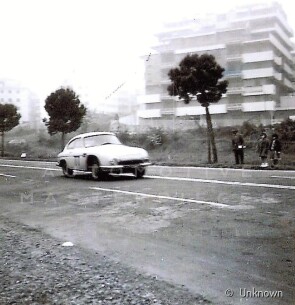
1956 DB H.B.R. 5
ON/OFF
Why am I an Automotive Masterpiece?
H. Works cars
Automobiles D.B. (FR)
L. Limited edition cars
. 3 cars are known with the retractable and recessed circular headlights present at the same time
The DB H.B.R. 5 and H.B.R. 4 are automobiles produced by D.B. between 1952 and 1961. The concept of Deutsch-Bonnet is simple an ultra-light car with a small engine. At the 1954 Paris Motor Show, the new H.B.R. 5 2+2-seater was built on a fiberglass unibody structure (bolt on a backbone chassis) with retractable headlamps. It replaces the aluminum prototype presented a year earlier. The initials H.B.R. have the following meaning: they were the International Motor Sport Federation codes governing motor racing. The "H" corresponds to the category of sports cars whose engine capacity is between 500 and 750 cc. When the cylinder capacity will rise to 851 cc the initial "H" should have been replaced by the initial "G" (cylinder capacity between 750 and 1000 cc), however for the customers, Deutsch and Bonnet judged that it was preferable to retain the well-known name. The "B" stands for two-seater cars. The "R" stands for cars that can drive on the road. In 1958, the model range was composed as follows: H.B.R. 4 had a 4 hp (taxation class) engine, 745 cc. H.B.R. 5 standard had a 5 hp (taxation class) engine, 851 cc for 42 (actual SAE) hp, maximum speed 155 km/h. H.B.R. 5 “Rallye Luxe” had a 5 hp (taxation class) engine, 851 cc for 52 (actual SAE) hp improved by Bonnet, maximum speed 165 km/h. The 745cc Rallye engine was optional. All models have a backbone frame, full independent suspensions with triangle on the front axle, rear torsion bars and a fully synchronized gearbox. The body will receive several modifications in the model career: the central edge of the hood is removed in June 1956, the bumpers are integrated in February 1957, the hinges of the trunk door are visible in March, the headlights are fixed under bubble in December and the the range of the bumpers was increased in January 1959. On this date, a "Grand Luxe" version benefited from a double tubular bumper at the front. It can receive a Vistadome transparent roof, borrowed from the Simca Vedette. The manufacture of the H.B.R. 5 coach stopped in the fall of 1959. However, in 1960 and 1961, sales continued with the low-slung “Super-Rallye” coach with a 954 cc 70 (actual SAE) hp twin spark engine. This engine also had two double-barrel carburettors which was equivalent to four carburettors for two cylinders. Ten examples were made. A total of 660 specimens of H.B.R. 5 were sold through 1961 and is still remembered today for its good results also in sports.
The car with chassis no. HBR5 842 was coached with “Grand Tourisme” body in January 1956. It’s one of the three cars known with both the retractable and recessed circular headlights present at the same time. It was registered under the aegis of the parent company and participated in two editions of the Mille Miglia, in 1956 (finishing 6th in class) and 1957. Its sporting history then took place in France. At the wheel, always, Gerard Parmentier. The history of the car, sporty and otherwise, is well evidenced by documents and photos from the era. The car has dedicated pages in the third volume of the Mille Miglia's Chassis series, published by Automotive Masterpieces. The car appears in the scenes of Michael Mann's film "Ferrari". The car has undergone a recent, documented restoration which has restored its original silver livery.





